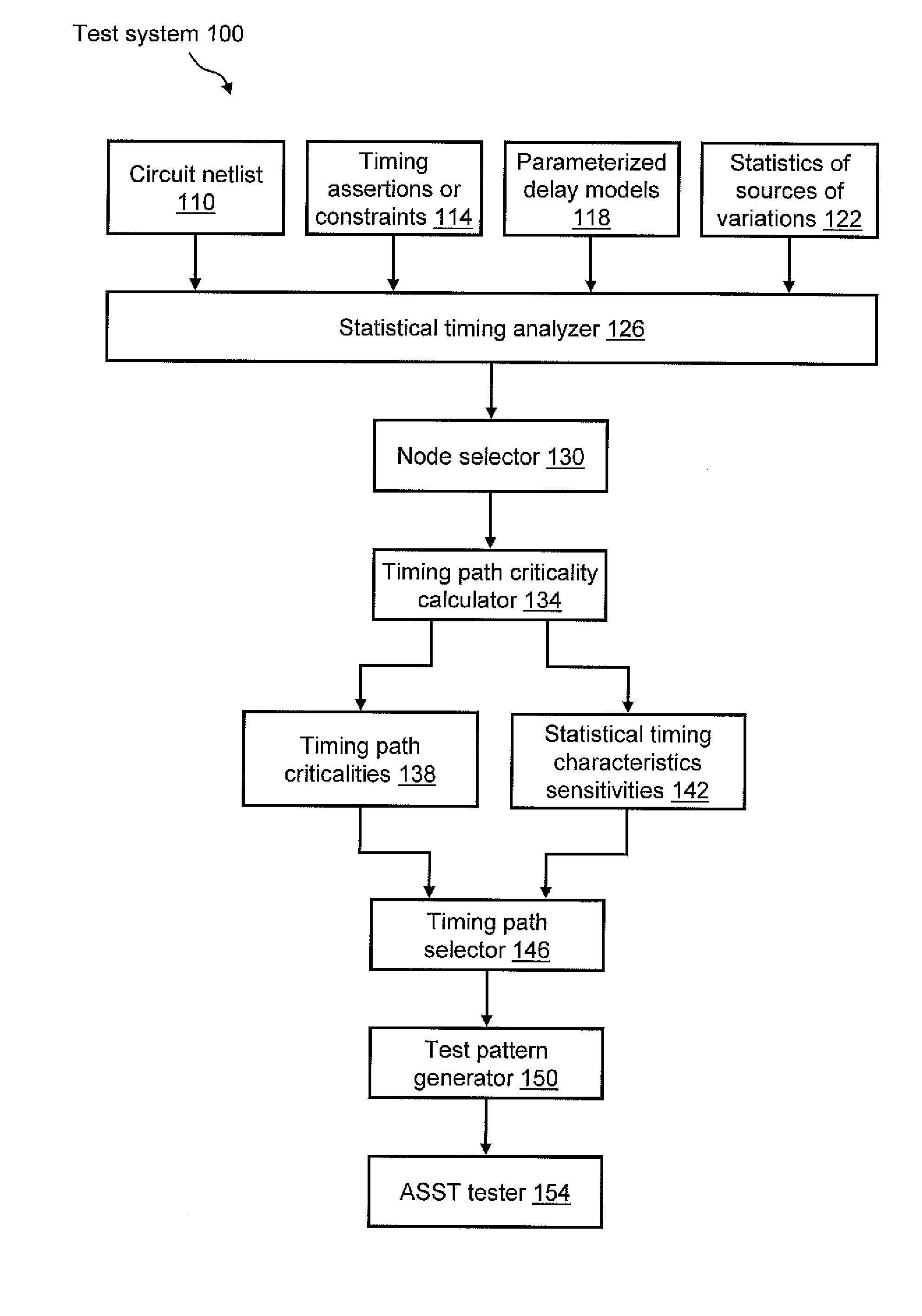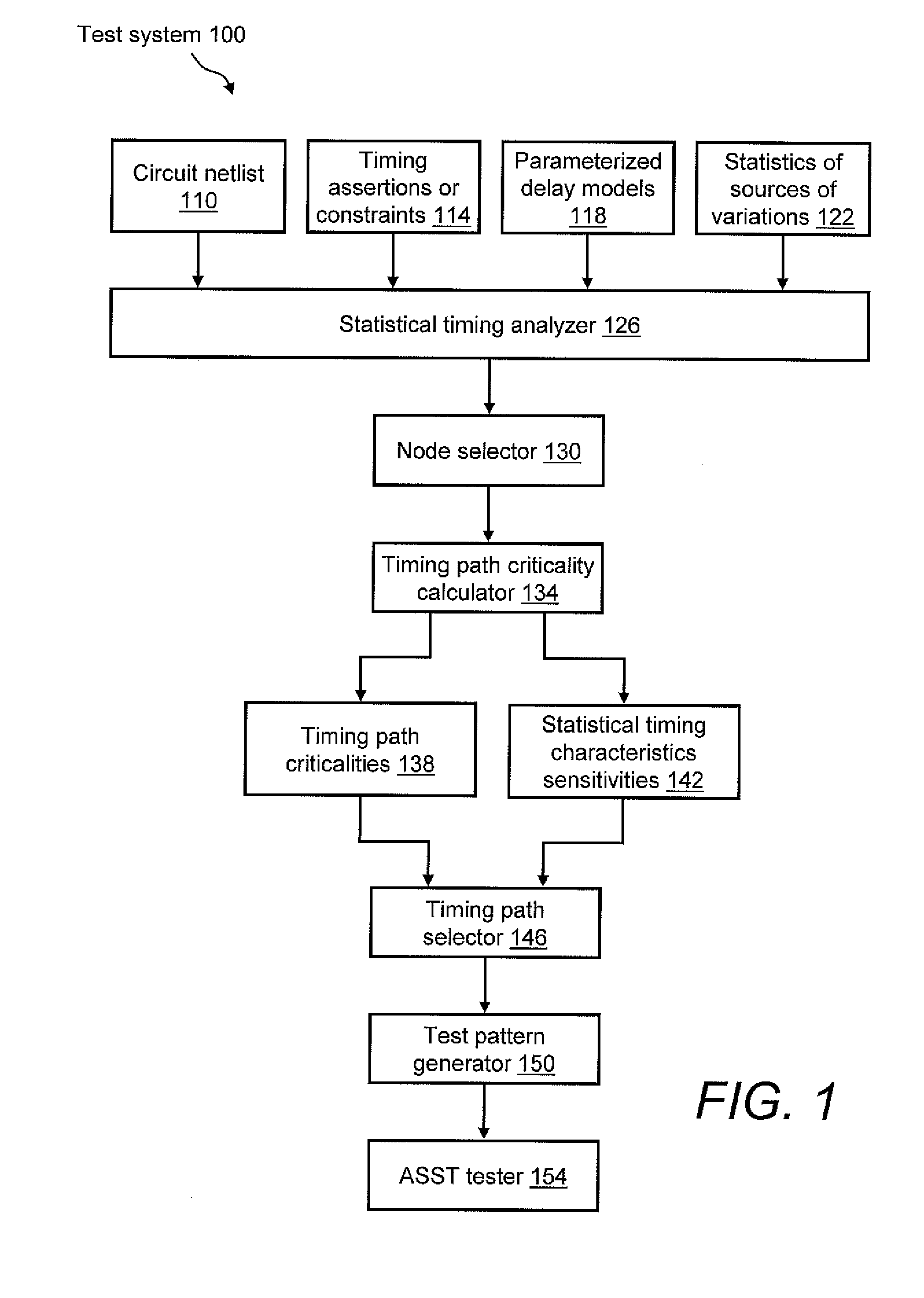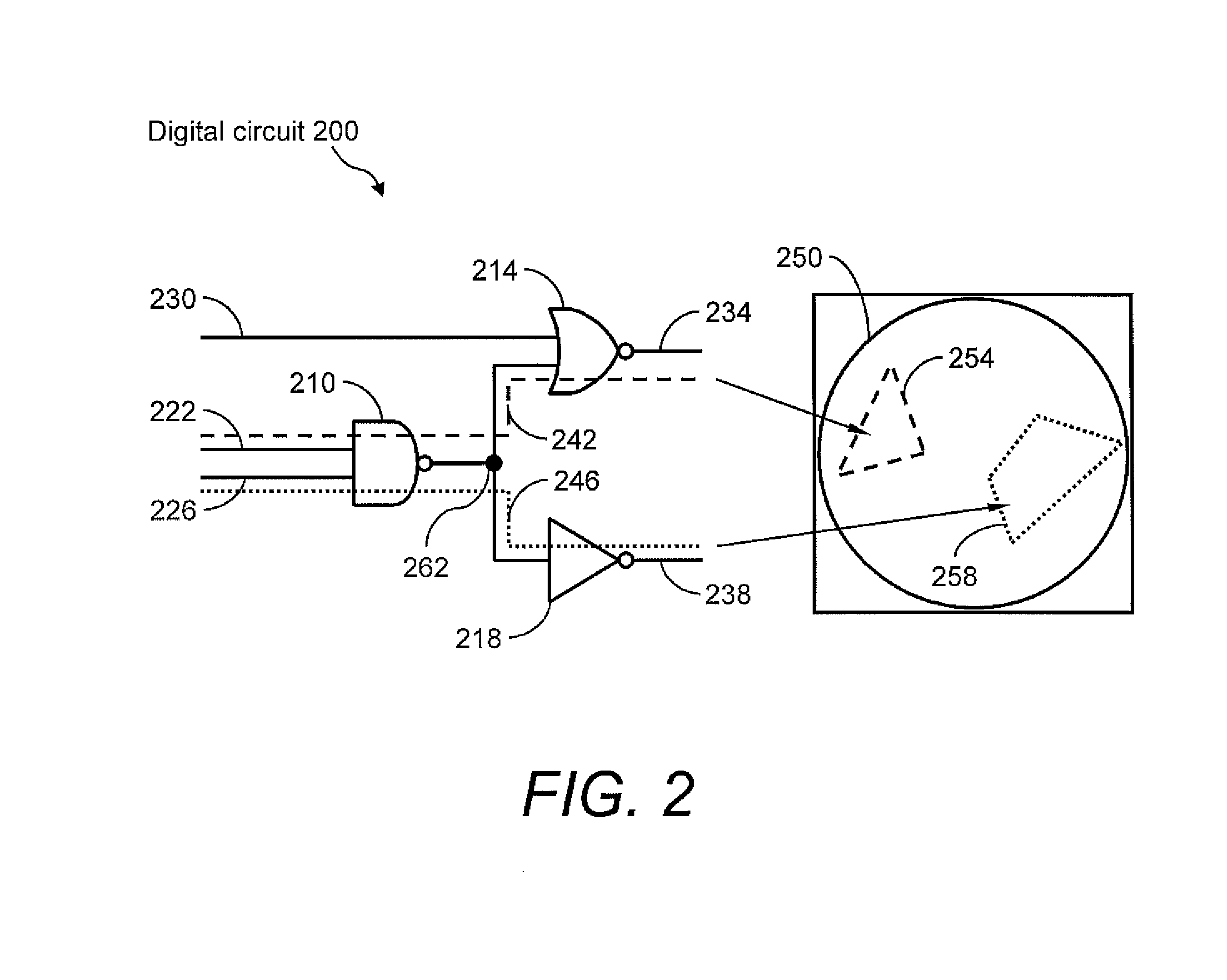System and method for generating at-speed structural tests to improve process and environmental parameter space coverage
a technology of structural test and process, applied in the field of integrated circuit design, can solve the problems of large variability in performance of modern integrated circuits (ics), challenge in testing ics, and impracticality of approach implementation
- Summary
- Abstract
- Description
- Claims
- Application Information
AI Technical Summary
Benefits of technology
Problems solved by technology
Method used
Image
Examples
Embodiment Construction
[0014]Referring to the drawings, FIG. 1 illustrates an example 100 of a test system for performing at-speed structural testing (ASST) on one or more fabricated integrated circuits (ICs) (not shown). As discussed below in greater detail, exemplary test system 100 uses timing path criticality probability as a basis for selecting which timing path(s) to test during ASST of the IC(s). Selecting the timing path(s) in this manner allows for the realization of the benefits of ASST, e.g., full functional-speed testing using actual clock trees, while also minimizing the time needed to provide ample test coverage of the process space.
[0015]Test system 100 may be configured to receive a plurality of inputs, such as first, second, third, and fourth inputs 110, 114, 118, 122. First input 110 is a circuit netlist that represents the structure of a circuit to be analyzed. Second input 114 is a set of timing assertions or constraints. In one example, timing assertions or constraints 114 may include...
PUM
 Login to View More
Login to View More Abstract
Description
Claims
Application Information
 Login to View More
Login to View More - R&D
- Intellectual Property
- Life Sciences
- Materials
- Tech Scout
- Unparalleled Data Quality
- Higher Quality Content
- 60% Fewer Hallucinations
Browse by: Latest US Patents, China's latest patents, Technical Efficacy Thesaurus, Application Domain, Technology Topic, Popular Technical Reports.
© 2025 PatSnap. All rights reserved.Legal|Privacy policy|Modern Slavery Act Transparency Statement|Sitemap|About US| Contact US: help@patsnap.com



